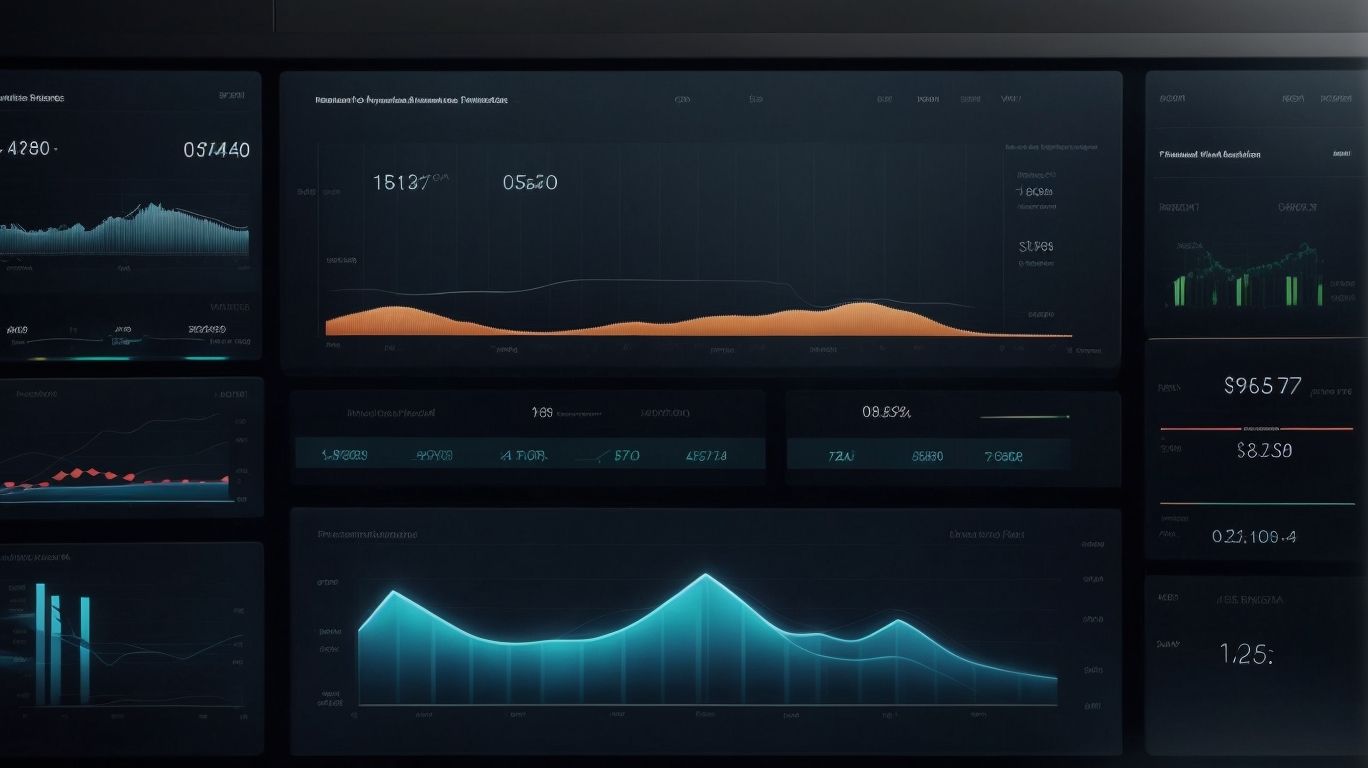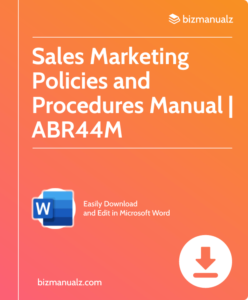What Are Key Performance Metrics KPIs for Sales?

Are you struggling to measure the success of your sales team? Do you want to improve your company’s overall performance? Look no further. In this article, we will delve into the world of Key Performance Metrics for Sales and why they are crucial for driving business growth. What Are Key Performance Metrics KPIs for Sales?
What Are Key Performance Metrics for Sales?
Key performance metrics for sales are crucial in evaluating the success and effectiveness of a sales team. These metrics offer valuable insights into the performance of sales representatives and the overall sales process.
Some essential key performance metrics for sales include:
- Sales revenue: This measures the total amount of revenue generated from sales.
- Conversion rate: This indicates the percentage of leads that successfully convert into sales.
- Average deal size: This measures the average value of each sale.
- Sales cycle length: This measures the time it takes for a lead to become a sale.
- Customer acquisition cost: This measures the cost of acquiring each new customer.
By monitoring these metrics, businesses can pinpoint areas for improvement and make data-driven decisions to optimize their sales performance.
Why Are Key Performance Metrics Important for Sales?
Key performance metrics play a crucial role in sales as they offer valuable insights into the effectiveness and efficiency of a sales team. These metrics are essential in identifying areas for improvement, setting realistic targets, and tracking progress towards goals.
Moreover, they enable sales managers to make data-driven decisions, allocate resources efficiently, and provide targeted coaching and support to their team. By closely monitoring metrics such as:
- conversion rates
- average deal size
- sales cycle length
Companies can optimize their sales processes and ultimately drive a 23% increase in sales revenue.
What Are the Different Types of Key Performance Metrics for Sales?
In the world of sales, measuring performance is crucial for understanding and improving business success. There are several types of key performance metrics that can provide valuable insights into different aspects of the sales process.
In this section, we will discuss the four main categories of sales metrics: activity, conversion, revenue, and profitability. By understanding the differences between these metrics, businesses can gain a comprehensive understanding of their sales performance and make informed decisions for growth and improvement.
1. Activity Metrics
Activity metrics are crucial in measuring the effectiveness and productivity of a sales team. To ensure success, here are some steps to follow:
- Define relevant activities: Identify key activities that have an impact on sales performance, such as calls made, meetings scheduled, or demos conducted.
- Set targets: Establish specific targets for each activity metric to drive performance and provide a benchmark for improvement.
- Implement tracking systems: Utilize sales management software or CRM tools to accurately track and record activity metrics.
- Analyze data: Regularly review and analyze the activity metrics to identify trends, patterns, and areas for improvement.
- Provide feedback and coaching: Use activity metrics to give targeted feedback to sales reps and coach them on ways to improve their performance.
- Adjust strategies: Make adjustments to sales strategies based on the insights gained from activity metrics to optimize sales performance.
2. Conversion Metrics
Conversion metrics are essential for evaluating the effectiveness of sales strategies and improving sales performance. Here are the steps to measure and analyze conversion metrics:
- Define the Conversion: Determine what constitutes a conversion for your business, such as a completed purchase or a lead generated.
- Track Conversion Rate: Calculate the percentage of leads or prospects that convert into customers. Divide the number of conversions by the total number of leads or prospects.
- Analyze Conversion Funnel: Identify the stages of the customer journey where conversions drop off. Determine if there are any bottlenecks or areas for improvement.
- Measure Conversion Time: Assess the time it takes for a lead to convert into a customer. This can help identify delays or inefficiencies in the sales process.
- Segment Conversion Data: Analyze conversion metrics based on different customer segments, such as demographics or referral sources. This can provide insights into which segments are more likely to convert.
By regularly monitoring and optimizing conversion metrics, businesses can enhance sales performance and drive revenue growth.
3. Revenue Metrics
Revenue metrics are essential in evaluating the financial performance of a sales team. They provide valuable insights into the revenue generated by sales activities and help identify areas for improvement. Here are some key revenue metrics to consider:
- Total Revenue: The overall sales revenue generated within a specific period.
- Revenue Growth: The percentage increase in revenue compared to a previous period.
- Customer Lifetime Value: The total revenue expected from a customer over their lifetime.
- Win Rate: The percentage of opportunities that result in a closed deal.
- Sales Conversion Rate: The percentage of leads or prospects that convert into paying customers.
Tracking these revenue metrics allows businesses to assess sales performance, make data-driven decisions, and optimize strategies to drive revenue growth.
4. Profitability Metrics
Profitability metrics are essential in evaluating the financial success of a sales team. These metrics offer valuable insights into the profitability of sales activities and aid in identifying areas for improvement. Some commonly used profitability metrics include:
- gross profit margin
- net profit margin
- return on investment (ROI)
- customer lifetime value (CLV)
By monitoring these metrics, businesses can make informed decisions to optimize sales strategies, pricing, and resource allocation. To effectively utilize profitability metrics, it is crucial to align them with sales goals, regularly monitor performance, and make necessary adjustments to strategies.
The implementation of tools such as CRM software, business intelligence tools, and sales performance management software can facilitate the tracking and analysis of profitability metrics.
How Do You Determine Which Key Performance Metrics to Track?
In the world of sales, tracking key performance metrics is crucial for measuring success and identifying areas for improvement. But with so many metrics to choose from, how do you determine which ones to focus on? In this section, we will discuss three key factors to consider when deciding which performance metrics to track.
First, it’s important to understand your sales goals and which metrics align with them. Then, we’ll explore how identifying areas of improvement can help narrow down your choices. Lastly, we’ll touch on industry standards and how they can inform your decision-making process.
1. Understand Your Sales Goals
Understanding your sales goals is crucial in determining the key performance metrics that you need to track. To gain clarity on your sales goals, follow these steps:
- Define your objectives: Clearly identify what you want to achieve with your sales efforts, whether it’s increasing revenue, acquiring new customers, or penetrating new markets.
- Break down your goals: Divide your overall sales goals into smaller, achievable targets. Set specific, measurable, attainable, relevant, and time-bound (SMART) goals.
- Analyze past performance: Review historical sales data to understand your current performance and identify areas for improvement.
- Collaborate with stakeholders: Involve your team members, managers, and stakeholders to gather insights and align your sales goals with broader organizational objectives.
- Consider market trends: Stay updated on industry trends, market conditions, and customer preferences to ensure your sales goals are realistic and relevant.
By understanding your sales goals, you can align your key performance metrics with the desired outcomes, track progress effectively, and make informed decisions to improve sales performance. Remember to continuously assess and adjust your goals as your business evolves.
2. Identify Key Areas of Improvement
Identifying key areas of improvement is crucial for optimizing sales performance. Here are the steps to identify these areas:
- Analyze sales data: Review sales reports, customer feedback, and performance metrics to identify trends and patterns.
- Identify bottlenecks: Pinpoint areas where the sales process is slowing down or experiencing obstacles, and determine ways to improve efficiency.
- Evaluate sales team performance: Assess the skills, knowledge, and effectiveness of your sales team to identify areas where additional training or support may be needed.
- Monitor customer interactions: Track customer interactions to identify areas where customer satisfaction could be improved, and make necessary changes to enhance the overall experience.
- Seek feedback: Gather feedback from customers, sales team members, and other stakeholders to identify areas for improvement and implement effective solutions.
What Tools Can Help Track and Analyze Key Performance Metrics?
In order to measure the success of a sales team, it is essential to track and analyze key performance metrics. This can be a daunting task, but fortunately, there are various tools that can assist in this process. In this section, we will discuss the top tools that can be used to effectively track and analyze key performance metrics for sales.
These include customer relationship management software, business intelligence tools, and sales performance management software. Each tool offers unique features and capabilities that can help businesses gain valuable insights into their sales performance.
1. Customer Relationship Management Software
Using CRM software is essential for businesses to efficiently manage and enhance their sales performance. To effectively utilize CRM software, follow these steps:
- Centralize customer data: Input all customer information, interactions, and sales activities into the CRM system to have a comprehensive view of each customer.
- Track sales activities: Monitor calls, emails, and meetings with customers to ensure timely follow-ups and effective communication.
- Analyze customer behavior: Utilize CRM analytics to identify buying patterns, preferences, and potential opportunities for upselling or cross-selling.
- Manage sales pipeline: Keep track of leads, opportunities, and deals in the CRM system to streamline the sales process and prioritize sales efforts.
- Collaborate and share information: With CRM software, teams can collaborate, share customer insights, and work together to achieve sales goals.
Fact: According to Salesforce.com, businesses that effectively use CRM software experience an average increase in sales by 29%.
2. Business Intelligence Tools
Business intelligence (BI) tools are crucial for tracking and analyzing key performance metrics in sales. Follow these steps to effectively utilize these tools:
- Research and Evaluate: Take the time to explore the various BI tools available in the market. Assess their features, capabilities, and user reviews.
- Select the Right Tool: Choose a BI tool that best fits your business needs, budget, and technical requirements.
- Data Integration: Integrate the tool with your existing systems, such as CRM software, to extract and consolidate relevant sales data.
- Customize Dashboards: Design intuitive dashboards that display real-time data and KPIs, making it easy to monitor and analyze.
- Generate Reports: Utilize the reporting features of the BI tool to generate comprehensive reports on sales performance, trends, and forecasts.
By effectively leveraging BI tools, businesses can gain valuable insights, make informed decisions, and enhance their sales performance.
3. Sales Performance Management Software
Sales performance management (SPM) software is a crucial tool for businesses aiming to enhance their sales processes and increase revenue. This type of software allows companies to monitor and analyze essential performance metrics, including activity, conversion, revenue, and profitability metrics.
By utilizing SPM software, businesses can gain valuable insights into their sales performance, pinpoint areas for improvement, and establish goals and targets to drive sales success. Furthermore, SPM software seamlessly integrates with other tools such as customer relationship management (CRM) software and business intelligence tools, providing a comprehensive overview of sales performance and supporting data-driven decision-making.
How Can You Use Key Performance Metrics to Improve Sales Performance?
In the fast-paced world of sales, it is crucial to constantly evaluate and improve performance in order to stay competitive. One effective way to do this is by utilizing key performance metrics. These metrics provide valuable insights into the success and efficiency of your sales strategies.
In this section, we will discuss how you can use key performance metrics to identify areas of improvement, set goals and targets, and monitor and adjust your sales strategies for optimal performance. By implementing these strategies, you can drive your sales team towards success and achieve your business objectives.
1. Identify Areas of Improvement
To identify areas of improvement in sales performance, follow these steps:
- Analyze sales data to identify patterns and trends.
- Review customer feedback and complaints to identify areas of dissatisfaction.
- Conduct surveys or interviews with the sales team to gather insights and suggestions.
- Assess the effectiveness of current sales strategies and techniques.
- Compare sales performance against industry benchmarks or competitors.
- Identify any bottlenecks or inefficiencies in the sales process.
By following these steps, businesses can pinpoint areas of improvement and develop targeted strategies to address weaknesses and drive sales growth. Suggestions may include providing additional training and support to the sales team, optimizing sales processes, refining targeting and messaging, and leveraging technology and automation to streamline workflows.
3. Monitor and Adjust Strategies
To effectively monitor and adjust strategies for sales performance, follow these steps:
- Regularly review key performance metrics to identify areas that need improvement.
- Set specific goals and targets based on the insights gained from analyzing the metrics.
- Monitor progress towards the goals by tracking the relevant metrics on an ongoing basis.
- Adjust strategies and tactics as needed to align with the desired outcomes and improve performance.
Pro-tip: Continuously analyze and optimize your sales strategies by leveraging real-time data and insights from key performance metrics to stay agile and maximize results.
Frequently Asked Questions

What are Key Performance Metrics for Sales?
Key Performance Metrics for Sales are specific quantitative values used to measure the success and effectiveness of a sales team or individual. These metrics are used to evaluate and track performance, identify areas for improvement, and set strategic goals.
What are some common Key Performance Metrics for Sales?
Some common Key Performance Metrics for Sales include total sales revenue, number of closed deals, conversion rates, average deal size, customer acquisition cost, and sales quota attainment.
How are Key Performance Metrics for Sales used?
Key Performance Metrics for Sales are used to inform decision making and set goals for a sales team or individual. They can help identify strengths and weaknesses, track progress over time, and make data-driven decisions to improve overall sales performance.
Why are Key Performance Metrics for Sales important?
Key Performance Metrics for Sales are important because they provide objective data on how well a sales team or individual is performing. This allows for more effective goal setting, performance evaluation, and improvement strategies.
How can Key Performance Metrics for Sales be measured?
Key Performance Metrics for Sales can be measured through various methods, including tracking software, sales reports, and data analysis. It is important to ensure accurate and consistent measurement to get an accurate understanding of performance.
What are some best practices for using Key Performance Metrics for Sales?
Some best practices for using Key Performance Metrics for Sales include regularly tracking and analyzing data, setting specific and achievable goals, and using a combination of metrics to get a well-rounded understanding of performance. It is also important to communicate metrics and goals to the sales team and provide support for improvement strategies.

















Leave a Reply